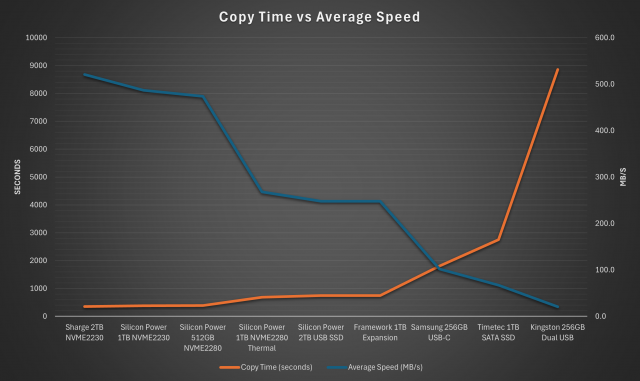Uncloud yourself
As I sit here putting thoughts to keyboard to write this post, I can't help but marvel at the number of portable USB SSDs that are just sitting on my desk. There was a period of time where I was absolutely certain that the days of USB storage where entering their twilight, that it was going to be the next floppy drive. And the reason for that is the same reason I own more USB storage than ever before. Cloud storage.
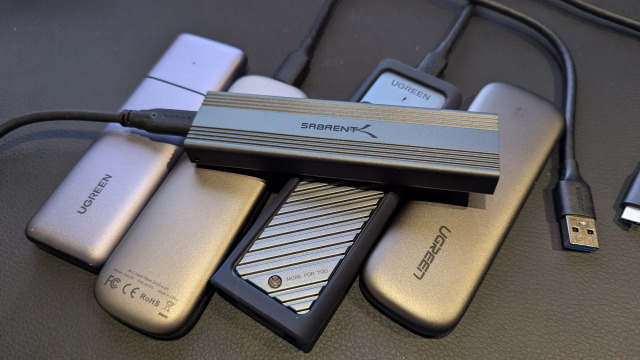
I recall the early days of services like DropBox, when I couldn't help but wonder who could possibly use a service like that given the state of Internet speeds. Today of course I have an Internet download speed that matches the majority of my home LAN, although admittedly it's crippled by NBNCo's version of asynchronous (seriously, 1000mb down and 50mb up? NBNCo, are you high?)
Yet it's at this moment of having more bandwidth than ever before that I'm also growing skeptical of cloud storage. So what gives.
There are two issues.
The first is I've gotten into drone photography and often need to back up my SD cards while remote. Mobile tethering just doesn't cut it for this job and high bandwidth video can kill a mobile phone plan quickly.
Second, I've just lost trust. This issue stems from my experience with M365 products at work. Microsoft's latest apps (teams, latest version of "new outlook" 🤮, etc..) keep you trapped in a cloud storage walled garden, where files are hard to find and are becoming meaningless in a way. Rather your whole workflow is trapped in a proprietary cloud service. This more than anything is killing my interest in cloud services.
So I've started moving more things offline, or at least into a service I'm hosting.
Enter USB storage. It's a category that never went away, but storage isn't created equal.
Skipping over USB2.0 storage speeds, my experience has been that USB storage (as with all flash storage really) is at the mercy of heat. The hotter it gets, the slower it gets. Of course the bulkier it is, the less pocketable it is. So here's a cross-section of USB storage that I use, let's see how it performs.
How are we testing here?
I'm not too interested in a purely academic exercise here, practicality is the name of the game. I have included CrystalDiskMark results as they tend to give a good indicator of potential performance but the problem with flash storage as noted above is heat. To encourage some heating and give a real world test, I have pulled together a test directory that contains a few Linux ISOs (yes real ISOs, not pretending they're ISOs) and the steam directory for a game that is both huge and contains a good mixture of file sizes. The full data set is a touch over 180GB in size and visually the distribution of file sizes look like this:

I feel a steam library copy is a reasonably realistic scenario that people are likely to experience in the real world. This could equally apply to any other data intensive activity: drone footage, video editing, virtual machines, etc. This is exclusively a test of sustained write speeds to the drives that are being tested. I chose this as my own experience is that this is often the achilles heel of any removable drive - when you want to copy data to it. The file copying was performed using FreeFileSync, a fantastic open source syncing tool that also displays a neat plot of your file copy progress including elapsed time and average transfer speeds. Every test was performed using my Framework 16 while connected on AC and on a balanced power profile. Again, trying to keep it all real-world.
Starting off slowly
The first drive here is the slowest. It's so slow that I don't have a CrystalDiskMark result for it as the benchmark seemed to freeze before completing. Likewise the transfer test was abysmal. I like to imagine the drive was designed to inflict misery and in that case it's a roaring success. The drive I'm talking about of course is the Kingston Data Traveler microDuo, a dual USB-A and USB-C drive that's super compact.
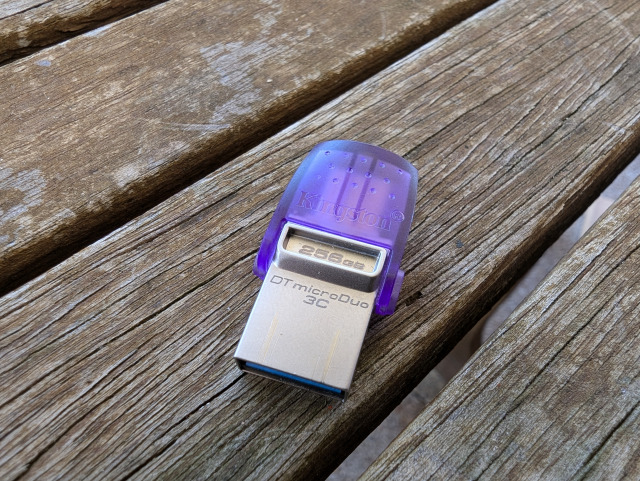
In the case of the microDuo I even took the approach of using the USB-C end in an attempt to offer as much heat dissipation as possible by leaving the larger USB-A side exposed.
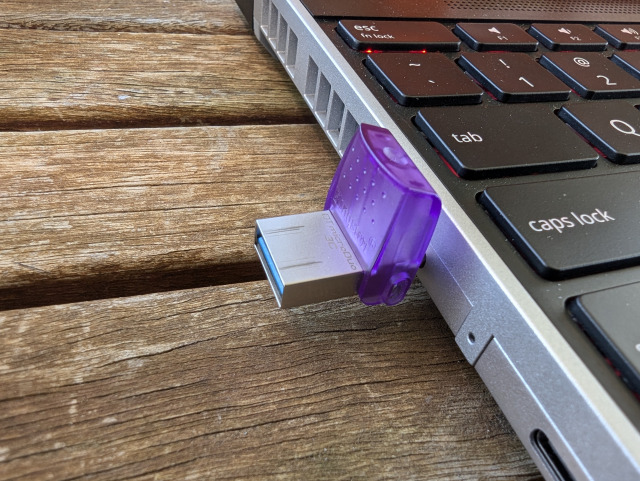
The drive still got VERY hot. As in uncomfortable to handle hot. The performance was still abysmal. By the time the transfer test was finished it was almost 2 and a half hours later. Looking at the plot below you can see there wasn't even a build-up of heat over time, the bytes transferred over time plot (green) is almost a straight line.
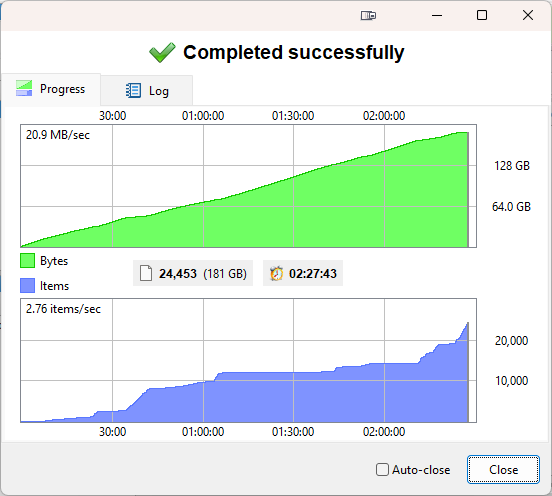
So who is this for? If you need to transfer a few files here and there from your mobile phone, this drive is great and you don't really feel the transfer speeds. It's also small enough to leave it anywhere you need. If you need to transfer more volume, even if your phone scenario is to back-up the full device or transfer many 10s of GB of video you've taken then this drive will likely be more inconvenience than it's worth.
A surprising slow down
The next drive signals the start of a theme. Many of the drives I use are actually SSDs in enclosures. Some of these were purposely purchased to be put in enclosures, but many are just hardware that's left over from my long history of using almost exclusively second hand corporate laptops. This drive is particularly interesting because it's a M.2 2280 SATA3 SSD. If that sounded like a jargon salad you may want to check this blog post by Kingston, but the short version is this:
- SATA is an older standard designed for hard disks
- SATA speeds top out at around 550MB/s
- NVME utilises PCI Express
- Speeds top out in the tens of thousands of MB/s There are also differences in queue depth, IOPs, etc.. Again the Kingston blog post gives a good summary.
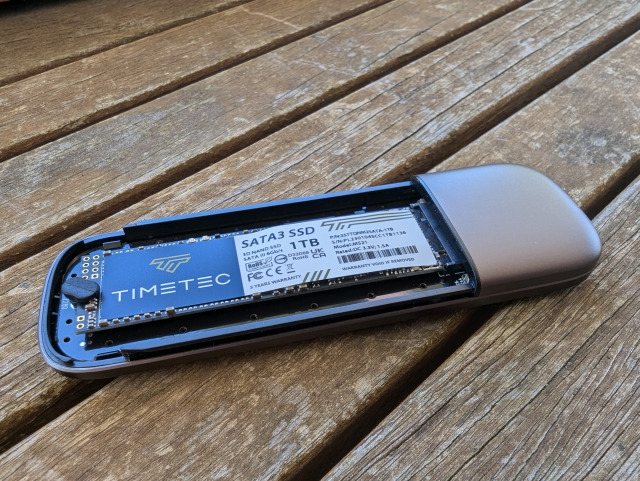
So 550MB/s max... Sounds OK for a USB drive, the last one topped out at a little over 20MB/s. What's not to like? And with that logic I can't argue. That's enough speed to saturate a basic USB 3.0 interface and while it may be a little lackluster vs a USB 3.2 Gen 2 interface (seriously USB implementers forum your naming SUCKS!) it's still decent performance.
Now enter the thermal ceiling (yes, always back to thermals it seems). The Crystal Disk Mark result for this drive show us up around the theoretical limits for the SATA3 interface but the extended file copy session shows a different story. A little under a quarter of the way through the transfer we hit a thermal limit and then finish off the remainder of the file transfer at reduces speeds with an average transfer rate a little over 67MB/s and the transfer complete after 45 mins and 53 seconds. For short bursty work loads this drive would be find but for sustained transfers it's best to look elsewhere.
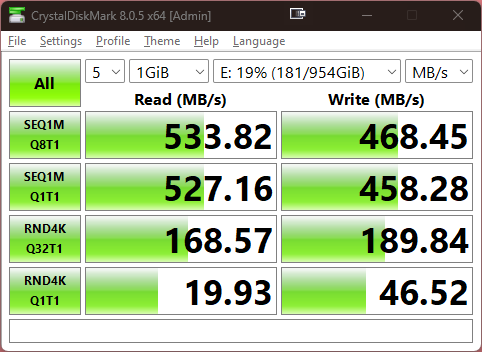
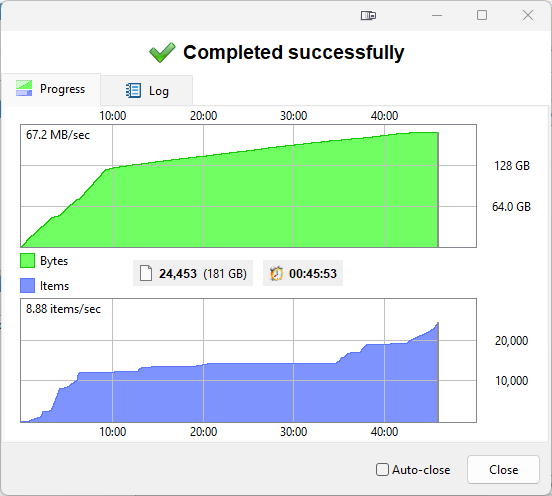
Size and speed
As we move up on speed we get to the first real surprise of this roundup, it's this little Samsung USB-C drive. It can be found here, it's not an affiliate link or anything like that.
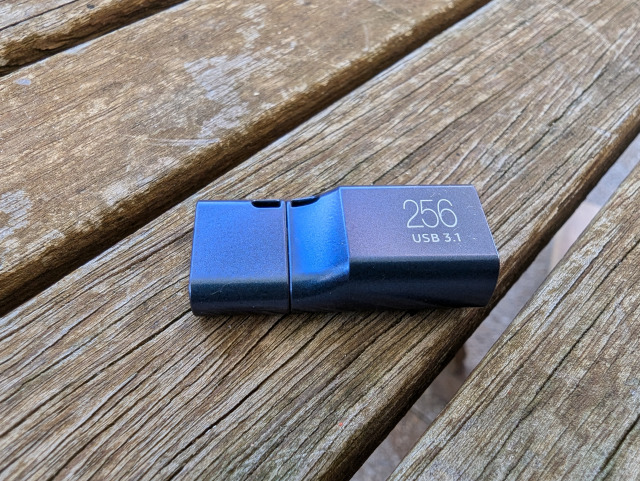
This tiny unassuming drive has an all plastic design, so I was waiting for the usual drop in performance over time... but it never happened. It wasn't the fastest drive but it surely wasn't the slowest. It out-performed the SATA3 SSD above. It's just a solid performer that stays cool and consistent. Write performance averages at 102MB/s and demonstrates what has to be one of the straightest plots for bytes over time. Finishing the copy transfer part of the test a few seconds after half an hour was up, I suspect Samsung purposely limits write performance to ensure thermals stay managed, but I can't really complain about the results.
If you're copying data to & from your phone and you don't need USB-A ports this is the drive to consider.
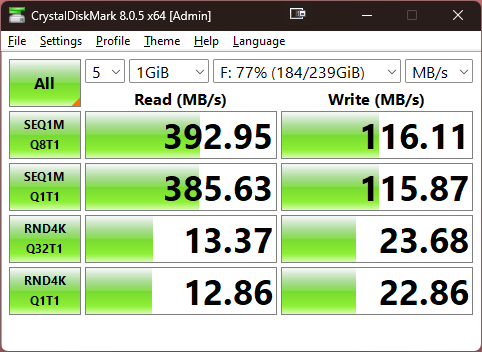
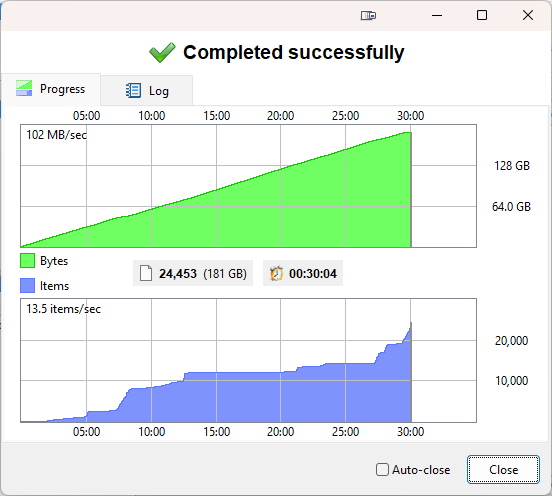
The MVP emerges
Next up we have what I consider the MVP. It's no-where near the fastest drive here and its use-cases are a little narrow so you may be thinking "how's that the MVP?". Let me explain.
The drive in question here is the Framework 1TB Expansion Module.
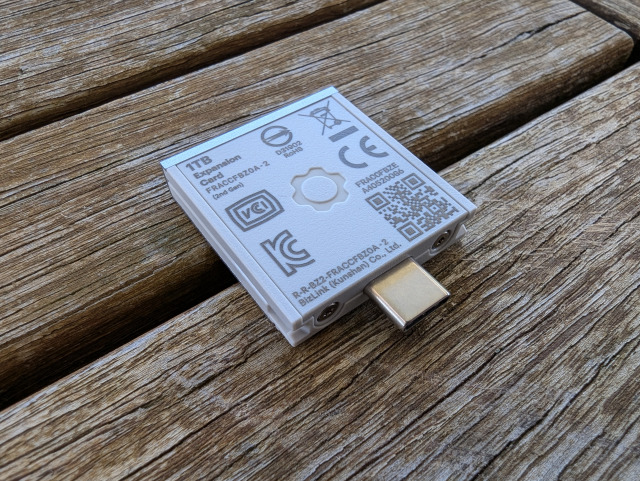
Using it's aluminum housing as a heat-sink it boasts an impressive write speed averaging to 248MB/s but if you own a Framework laptop it entirely disappears into the laptop itself and doesn't stick out. I even have a second one of these drives that I use as a Linux boot drive for dual-boot purposes.
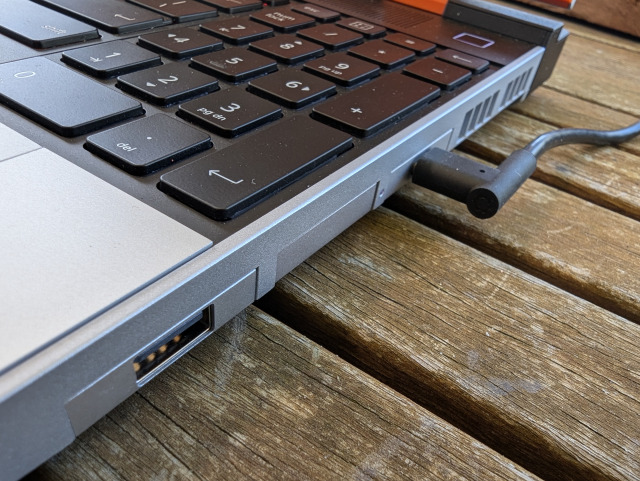
Falling perfectly in this goldilocks zone of offering enough speed to embarrass many other flash storage solutions while also being small enough to disappear entirely if you use a Framework laptop is why I consider this the MVP. I do have to acknowledge however that the Framework drive is hitting a thermal limit, pay close attention to the bytes over time plot again (green) and you'll see the speed tapers off a little of the way into the file copy. This is further reinforced by the CrystalDiskMark results that show the drive hitting the limits of USB3.2 Gen 2 with it's shorter bursty testing.
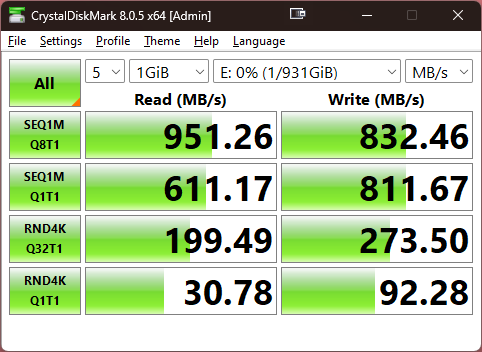
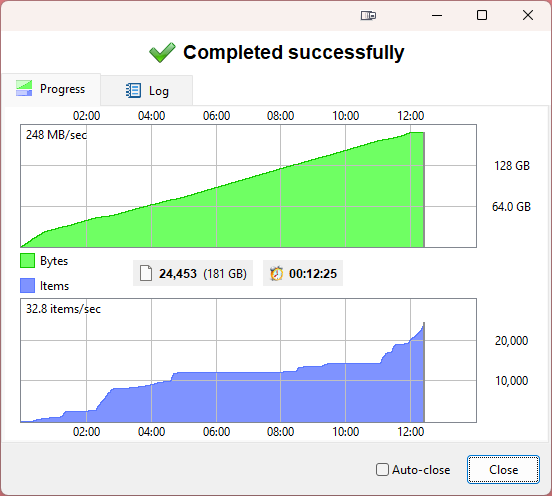
The MVP for everyone else
With a near-enough identical result to the Framework expansion drive, the Silicon Power 2TB USB SSD is the MVP for anyone who doesn't have a Framework laptop, or who wants a more traditional USB-A interface.
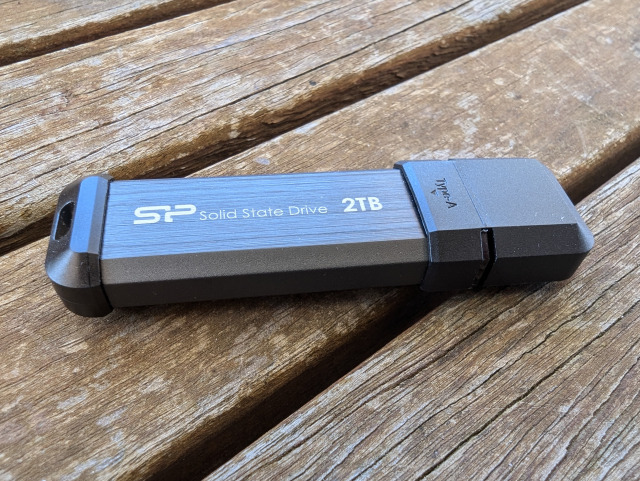
When I say identical I'm talking about matching write speeds of 248MB/s in the copy test and only one second slower at 12 minutes 26 seconds VS 12 minutes 25 seconds for the Framework. It's also another drive that appears to use its aluminum housing as a heatsink although interestingly it doesn't demonstrate the same sharp change in copy speeds the Framework did, rather the Silicon Power drive seems to slow down gradually over time, producing a bytes over time plot with a curvature to it.
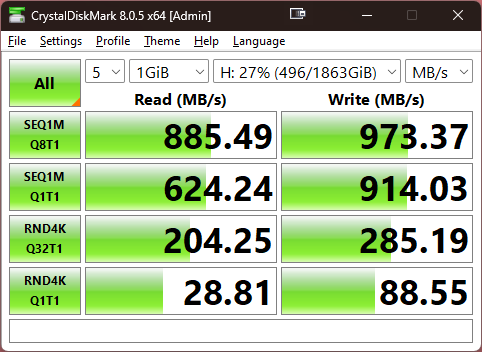
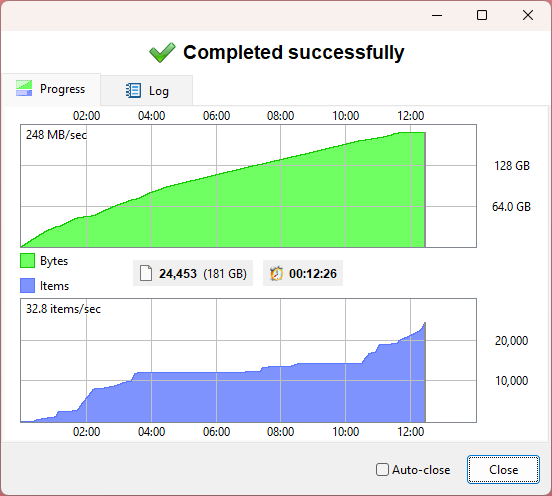
I can't explain this one
After the SATA SSD this was my next surprise - on the basis of the poor performance of this drive. The drive in question is a Silicon Power 1TB PCIe 3.0 NVME in 2280 form factor.
A quick side note, you'll notice lots of Silicon Power drives showing up in this review. This is for no other reason than they're relatively low cost for performance / capacity.
Why was I surprised? simply because I expected this to be one of, if not the top performer. Generally I've found the Silicon Power drives I use run relatively cool, combine that with the case that this drive has been given, the whole thing is a heat-sink with a thermal pad to ensure temperature transfer, yet the performance was nowhere near what I expected.
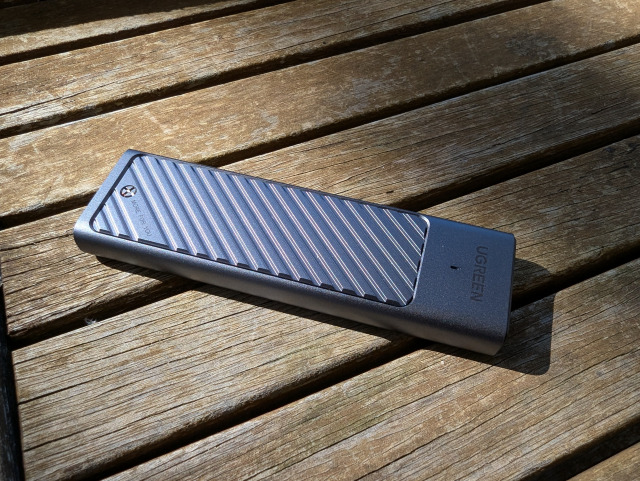
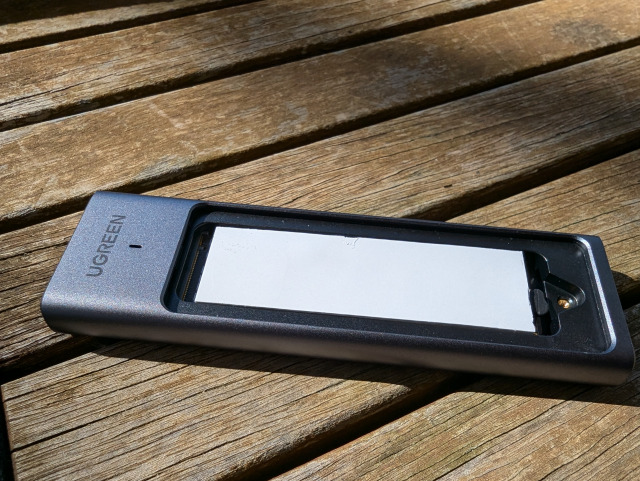
The CrystalDiskMark results are in line with expectations but the file transfer is nowhere so. At an average transfer rate of 268MB/s there's a clear drop off shown in the bytes over time graph. The drive stayed cool through the test, so the best theory I can come up with is some form of wear leveling may have interfered with the file transfer.
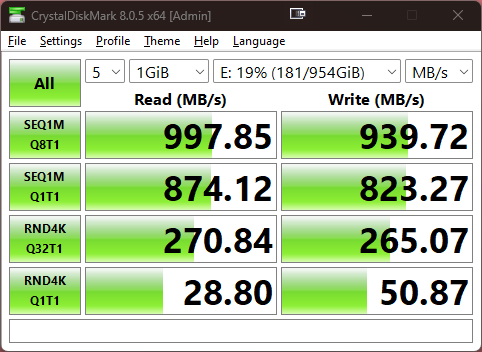
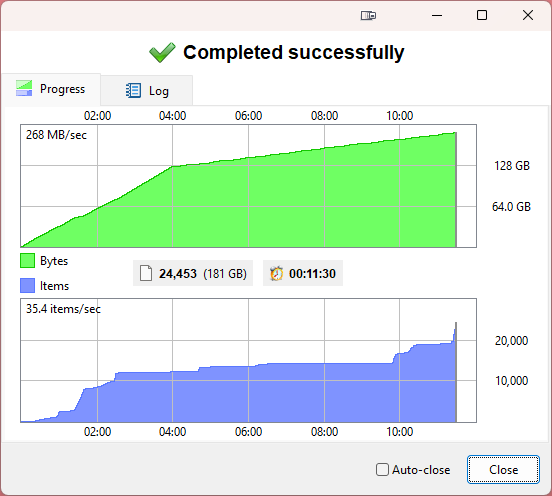
More like it
If the last was a surprise the this next drive was exactly what I expected. A 512GB Silicon Power PCIe 3.0 NVME SSD, yet this unit without cooling outperformed it's matching 1TB model with a heat sink. Go figure.
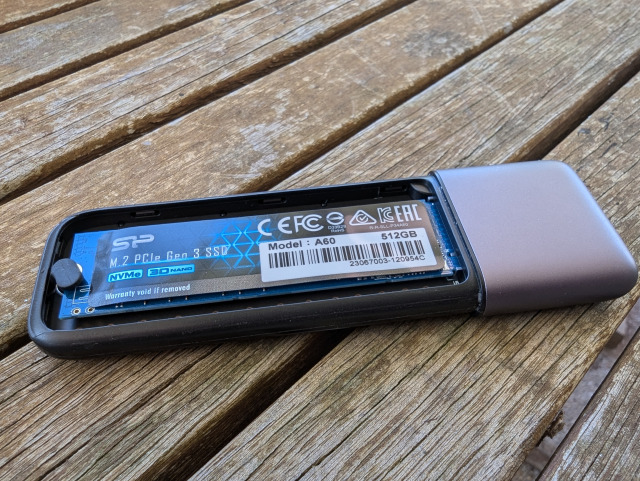


My new favorite form factor
Putting a 2230 SSD in an enclosure really in the best of both worlds. This is my new favorite form factor.
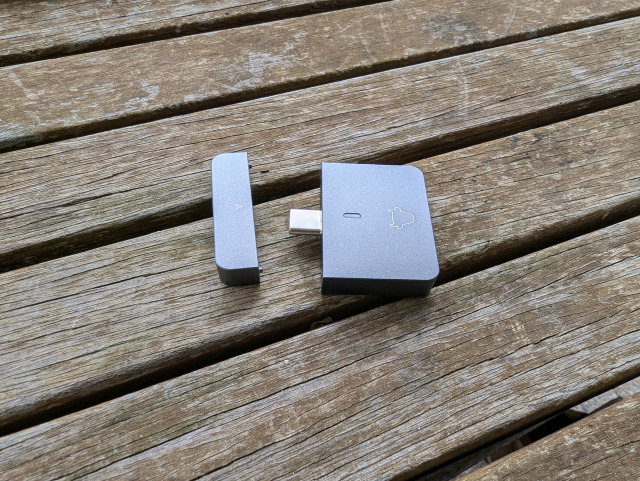
The enclosure in this test also has the honor of being the cheapest unit I could find on Amazon. I'm liking it more and more. What does let it down is thermals, the original SSD I had in it, a Western Digital SN520 2230 that shipped as an OEM component in old Dell laptop got HOT. Hot enough that this enclosure was often uncomfortable to handle.
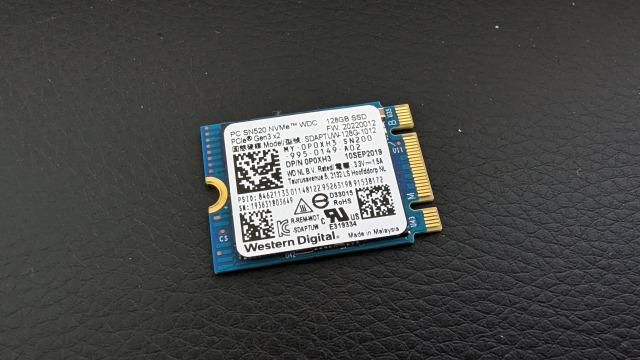
After I changed it to a Silicon Power 1TB PCIe 4.0 2230 SSD it became much cooler to touch.
Not only is this enclosure the cheapest it's also the second best performer in this round up. Not bad!
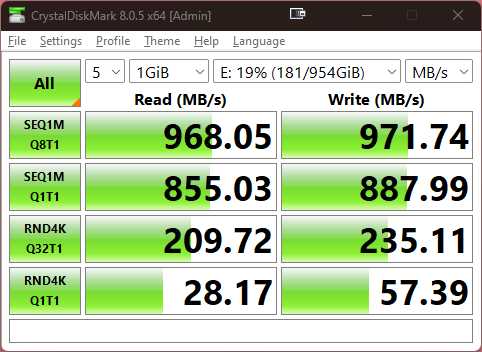
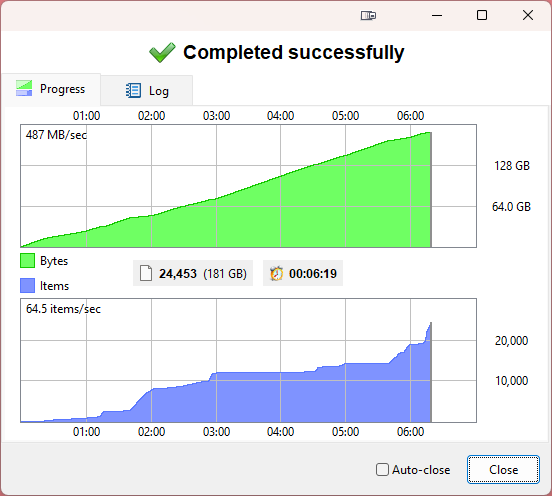
Long live the king
Continuing the trend of 2230, the top drive is a diminutive thing. An enclosure that's designed to plug in like a USB drive, but also can be plugged in with a cable much like other enclosures.
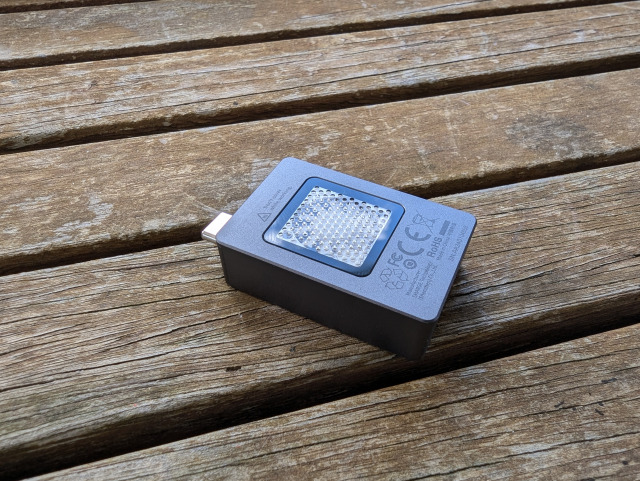
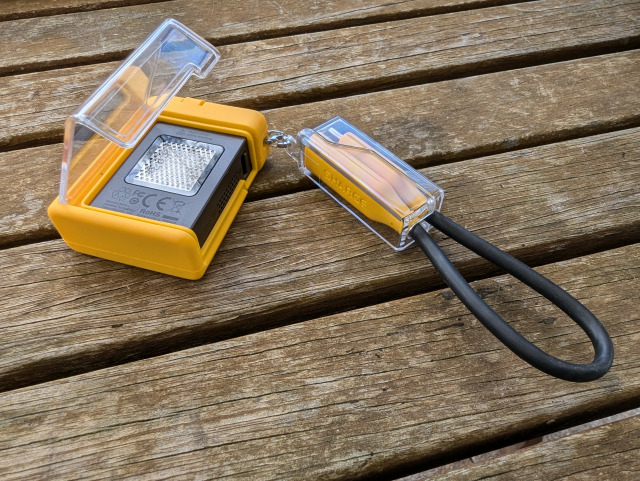
It's a handsome thing with a window to show off it's installed SSD, a 2TB PCIe 4.0 Corsair MP600 Core Mini in this instance.
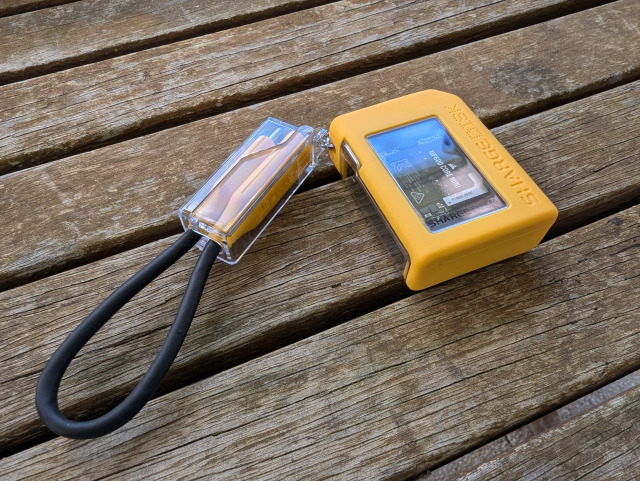

The enclosure is a Sharge Disk, its party trick is that the enclosure includes an active fan to keep the drive cool in use and ensure consistent performance. And it works! The real downside is like all active cooling setups there's noise. If you're using this in a library maybe think again. It you're going to use it in an even slightly noisy environment it'll be the fastest and most convenient drive you try.
The file transfer performance is a testament to the benefit of active cooling.
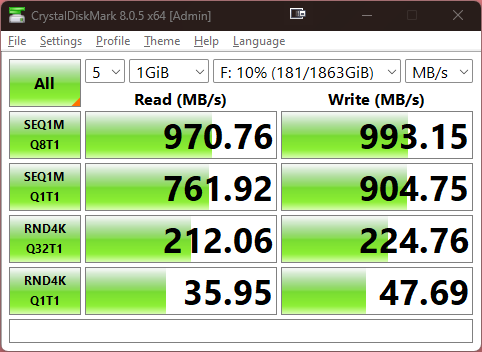
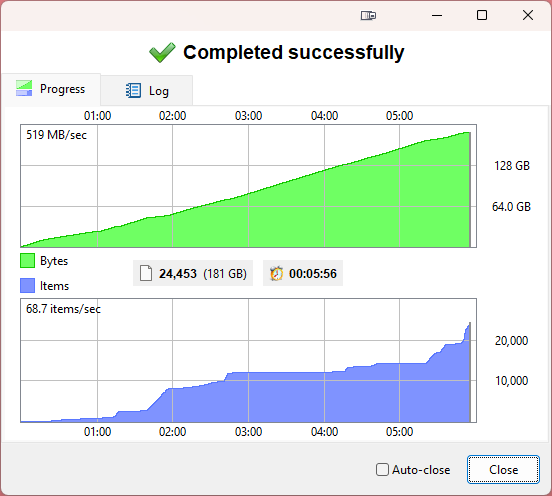
Closing thoughts
- USB storage isn't going away any time soon.
- The advent of 2230 enclosures means you're no longer needing to trade off speed vs convenience.
- Enclosures are a great way to give new life to unused SSDs, but performance may be average.
